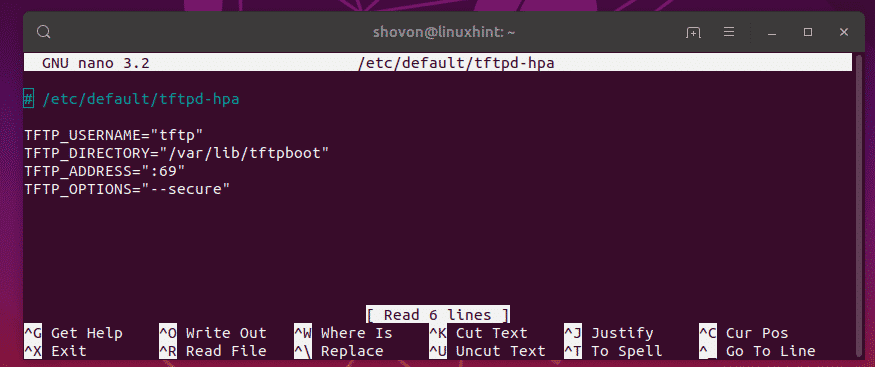
# cp -rf /mnt/install/netboot/* /srv/tftp/Ĭopy and Verify TFTP Files Step 3: Prepare Local Installation Source Filesħ. Also, list tftp system path to see the copied files. Next, copy the netboot files from Ubuntu mounted tree to tftp system path by issuing the below command.
UBUNTU TFTP SERVER INSTALL ISO
After Ubuntu server ISO has been downloaded, mount the image in /mnt directory and list the mounted directory content by running the below commands. On the next step grab the latest version of Ubuntu server ISO image for 64-bit architecture by issuing the following command.

Check dnsmasq service status to see if it has been started. Also, after you’ve finished editing the dnsmasq configuration file, create the directory for the PXE netboot files by issuing the below command and restart dnsmasq daemon to apply changes.

# mv /etc/nf /etc/Īdd the following configuration to nf file. Next, backup dnsmasq main configuration file and then start editing the file with the following configurations.
UBUNTU TFTP SERVER INSTALL INSTALL
In order to setup the PXE server, on the first step login with the root account or an account with root privileges and install Dnsmasq package in Ubuntu by issuing the following command.

Step 1: Install and Configure DNSMASQ Serverġ.
UBUNTU TFTP SERVER INSTALL HOW TO
In this guide we’ll show how to install Ubuntu Server via a PXE server with local HTTP sources mirrored from Ubuntu server ISO image via Apache web server. PXE or Preboot eXecution Environment is a server-client mechanism which instructs a client machine to boot form network.


 0 kommentar(er)
0 kommentar(er)
